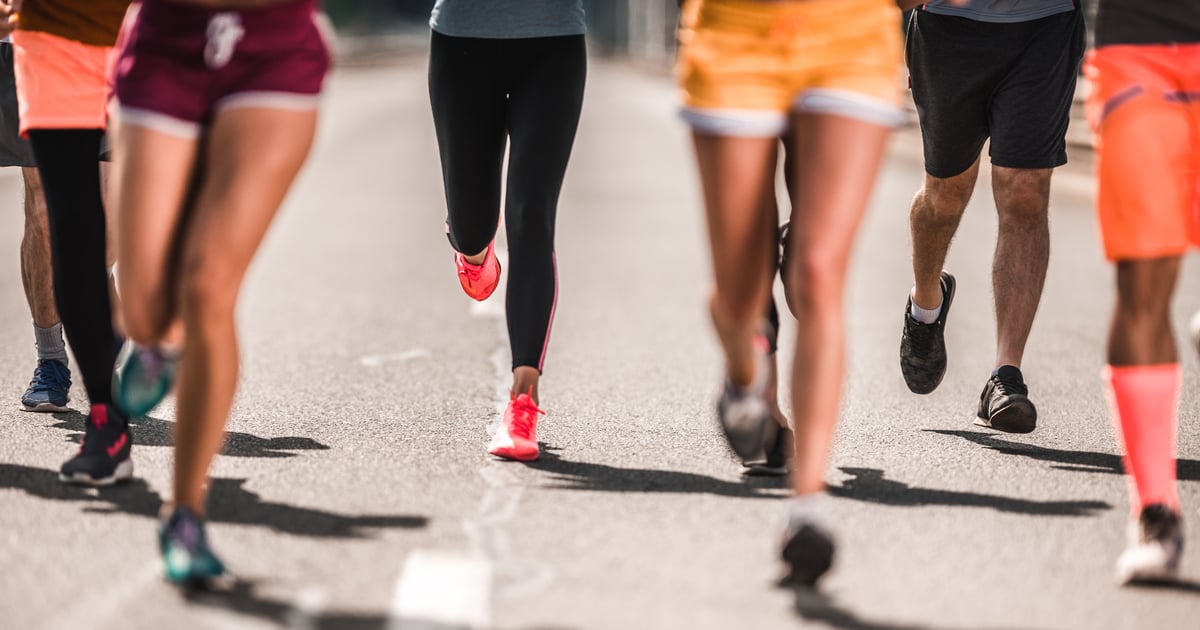
Participating in community races is one of my favorite fall activities. I love the crisp air, the themed events (and costumes!), and the opportunity to support causes I care about, like Race For the Cure. But with COVID-19 still in play, how safe are these races? Although a lot of events are going virtual — meaning, you can still run or walk them on your own, without navigating the crowds — there are still in-person races planned across the country. So, should you participate? What precautions should you take, if so? We asked experts for some insight.
Is It Safe to Participate in an In-Person Race During COVID-19?
The short answer: no group activities are considered safe right now. An outdoor race is likely safer than a lot of activities — but only if there are a lot of health and safety measures in place. And even then, it’s not risk-free.
“The risk of spreading COVID-19 is lower in outdoor settings where safe social-distancing practices are in place,” Connie Savor Price, MD, chief medical officer and infectious disease specialist at Denver Health Medical Center, told POPSUGAR. “If you can spread out and avoid physical contact, and don a mask when within six feet of others, it’s probably OK.”
Andria Rusk, PhD, a research assistant professor specializing in global health and infectious disease at Florida International University’s College of Public Health and Social Work, explained that, because there haven’t been any COVID-19 outbreaks tied to a marathon or any other races, “we don’t have any data that proves they are unsafe, or less safe than other similar activities. However, whenever you bring groups of people together you increase risk, of course.”
What Safety Precautions Should an Event Have in Place?
Dr. Rusk cautioned that the safety of a race primarily depends on how it’s organized and what safety measures they have in place. For instance: Are race staff wearing masks and gloves, sanitizing every half hour, and changing gloves after sanitation? Is medical aid prepared to provide care in a safe way? Are refreshment and aid stations contact-free? Are there hand sanitizing stations? Is the check-in process contact-free?
Any vendors or food stalls also need to be contactless and enforce social distancing. Refreshments are a very important consideration because they are often not spaced out and runners tend to clump together there, Dr. Rusk explained. Only individually wrapped items that are single use should be allowed, and there should be no open cups of liquid.
“In the case of an in-person race, it would require careful planning and orchestration, as well as diligent screening of race participants,” Dr. Savor Price said.
How Can Race Participants Stay Safe During COVID-19?
Dr. Rusk recommends gathering information on the race’s safety measures and asking any questions you may have before signing up. “I would likely look into cancellation clauses due to increases in COVID-19 cases,” she said. “Most races are nonrefundable and can be expensive. I would want to know what their plans are if cases in the race area increase, and how they will handle that.”
If you decide to participate, wear a mask and stay six feet apart, Dr. Price explained.
Of course, as Dr. Rusk emphasized, the only way to be 100 percent safe is to not go. There are lots of races offering virtual options — in some cases, those are the only options available — where you can run or walk your own course at the same distance and for time. That’s definitely the best practice for everyone involved.
